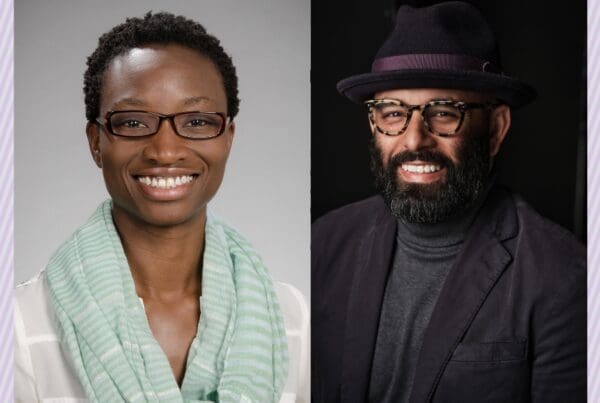Picture those brown UPS trucks zooming around city streets. Turns out there’s a similar delivery network in your brain cells, busily ferrying proteins to and fro.
Near the gridlocked heart of South Lake Union, a UW Medicine lab is studying what happens when that cellular network has a traffic jam. Their research could have implications for millions of Americans. Because if these “trucks” run into traffic, or mishandle their packages, or start falling behind schedule, the stage may be set for Alzheimer’s disease.
That – in an overly simplified nutshell – is the lead Jessica Young and her lab are pursuing. Young, an assistant professor of pathology and a member of the Institute for Stem Cell and Regenerative Medicine, studies the molecular and cellular mechanisms behind late-onset sporadic Alzheimer’s disease (SAD), the most common neurodegenerative disorder.
This past spring, Young was lead author on a paper that suggested this system – the endosomal network – could open up an entirely new avenue for treatments and therapies.
And it all started by placing Alzheimer’s in a dish.
Of mice and mouse-heimer’s
Animal models have yielded countless medical miracles by way of new drugs and treatments. But when it comes to Alzheimer’s … not so much.
One key problem is the sheer complexity of the disease, Young said. And that complexity stems from uniquely human components; mice don’t get Alzheimer’s. Scientists can alter the mouse genome in an attempt to mimic the disease, but the track record has demonstrated a complete failure at recreating it.
“I didn’t come up with this, but people jokingly talk about how we can cure ‘mouse-heimer’s’,’” Young said. “But then we try these therapies in people, and they all fail.”
The dream has long been to study real human cells that actually have Alzheimer’s. But as Young reasonably points out, “It’s been very hard to study human brain cells because no one wants to have their heads drilled into.”
Enter induced pluripotent stem cells, a technological revolution that picked up steam as Young was finishing graduate work here at UW.
{“preview_thumbnail”:”/sites/huddle/files/styles/video_embed_wysiwyg_preview/public/video_thumbnails/AApUK0NqS3Q.jpg?itok=lq5KUq8t”,”video_url”:”https://www.youtube.com/watch?v=AApUK0NqS3Q&feature=youtu.be”,”settings”:{“responsive”:1,”width”:”854″,”height”:”480″,”autoplay”:0},”settings_summary”:[“Embedded Video (Responsive).”]}
Here’s how it works: the lab obtains skin cells from patients with Alzheimer’s disease. Because all of a person’s cells share the same genome, the skin cells would contain the same genetic variations that affect the patients’ brain cells.
The researchers then reprogram the skin cells to act as stem cells, which are capable of developing into any cell type and coax them into becoming neurons.
They now have Alzheimer’s-in-a-dish, which lets the lab test any number of therapies and interventions on actual living human cells. (Take a deeper dive into the lab’s work creating neurons.)
Young’s research suggests that targeting defects in the endosomal network may be a promising strategy against the disease. Most current drugs and treatment focus on certain proteins that accumulate in a diseased brain.
Those same toxic proteins are transported by the endosomal network, which plays a key role in removing them. If the clearance doesn’t work, the toxic proteins stay in cells and disrupt normal function. To return to traffic analogies: the network acts like a tow truck clearing disabled vehicles that have caused a bottleneck. So you want the tow truck to get there and work properly as soon as possible
“If we could find something that made this process work better, and not run into traffic, that would be way upstream of the generation of these toxic proteins that have been the focus of current drugs,” Young said. “By using neurons in a dish, we could potentially catch something early.”
Making peace with incrementalism’s pace
Young has a slide she often includes in presentations. It presents Alzheimer’s as a puzzle. We know some of the pieces. There are many we don’t.
As she works to identify one of the puzzle pieces, Young knows she’s just one of many working to reveal that larger picture. And that’s OK. Even the small pieces make a difference.
“At a day-to-day level, it’s easy to think ‘oh, we’re just making incremental progress; I’ll never see the results of my work helping anyone,’” Young said. “But you just have to tell yourself that every step I take is advancing the knowledge. Even if I in my career never find a drug for Alzheimer’s, I’m confident the work we’re doing in my lab will get the field closer to finding it.”
Watch a UW Medicine Newsroom video of Jessica Young discussing her research.


